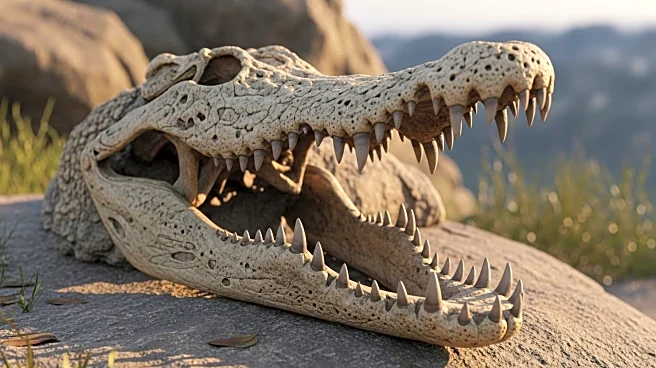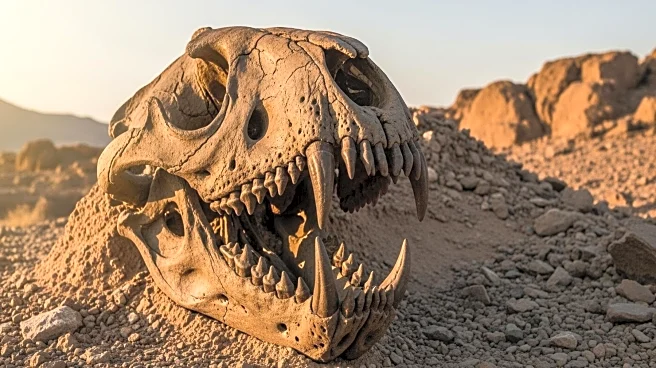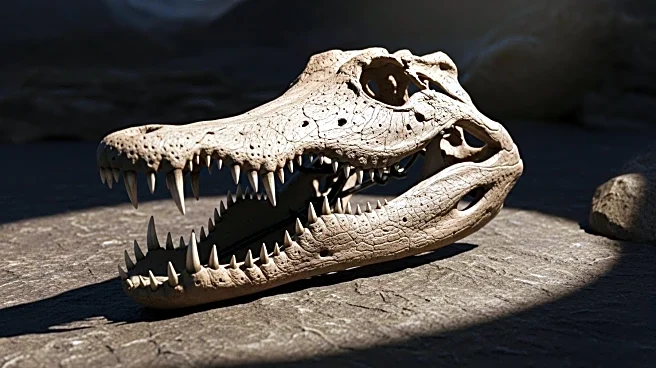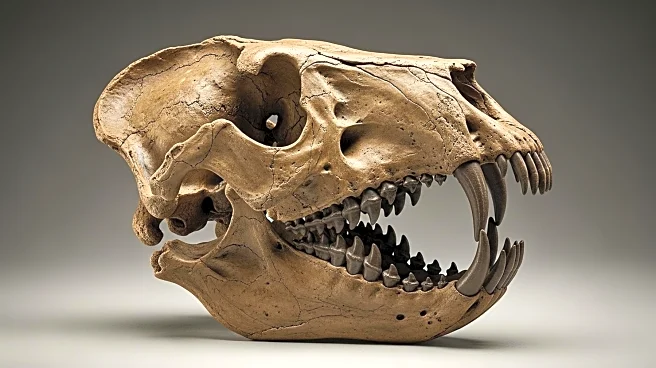What's Happening?
A team of researchers from the Museo Argentino de Ciencias Naturales 'Bernardino Rivadavia' has uncovered a remarkably well-preserved fossil of a large crocodile-relative predator in Argentina. The fossil, found in the Chorrillo Formation, dates back to the Maastrichtian age, approximately 70 million years ago. This formation was a warm, seasonally humid landscape home to various prehistoric creatures. The newly discovered species, named Kostensuchus atrox, is a peirosaurid crocodyliform, an extinct group related to modern crocodiles and alligators. The fossil includes a skull, jaws, and multiple body bones, suggesting the predator was about 3.5 meters long and weighed around 250 kilograms. Its powerful jaws and large teeth indicate it could have preyed on medium-sized dinosaurs.
Why It's Important?
The discovery of Kostensuchus atrox provides significant insights into the ecosystem of the Maastrichtian age in southern Patagonia. As the first crocodyliform fossil found in the Chorrillo Formation, it offers a unique perspective on the diversity and ecological dynamics of prehistoric predators. This species is one of the most intact peirosaurid crocodyliforms ever found, allowing scientists to better understand the evolutionary history and adaptations of these ancient reptiles. The research contributes to the broader understanding of predator-prey relationships and environmental conditions during the late Cretaceous period.
What's Next?
Further analysis of the Kostensuchus atrox fossil will likely focus on its ecological role and interactions with other species in the Chorrillo Formation. Researchers may conduct comparative studies with other crocodyliforms to explore evolutionary patterns and adaptations. The findings could also prompt additional excavations in the region to uncover more fossils and expand knowledge of the area's prehistoric biodiversity.
Beyond the Headlines
The discovery raises questions about the impact of climate and environmental changes on the evolution and extinction of species. Understanding the adaptations of Kostensuchus atrox could provide insights into how ancient predators responded to shifting habitats and climate conditions, offering parallels to modern-day ecological challenges.












